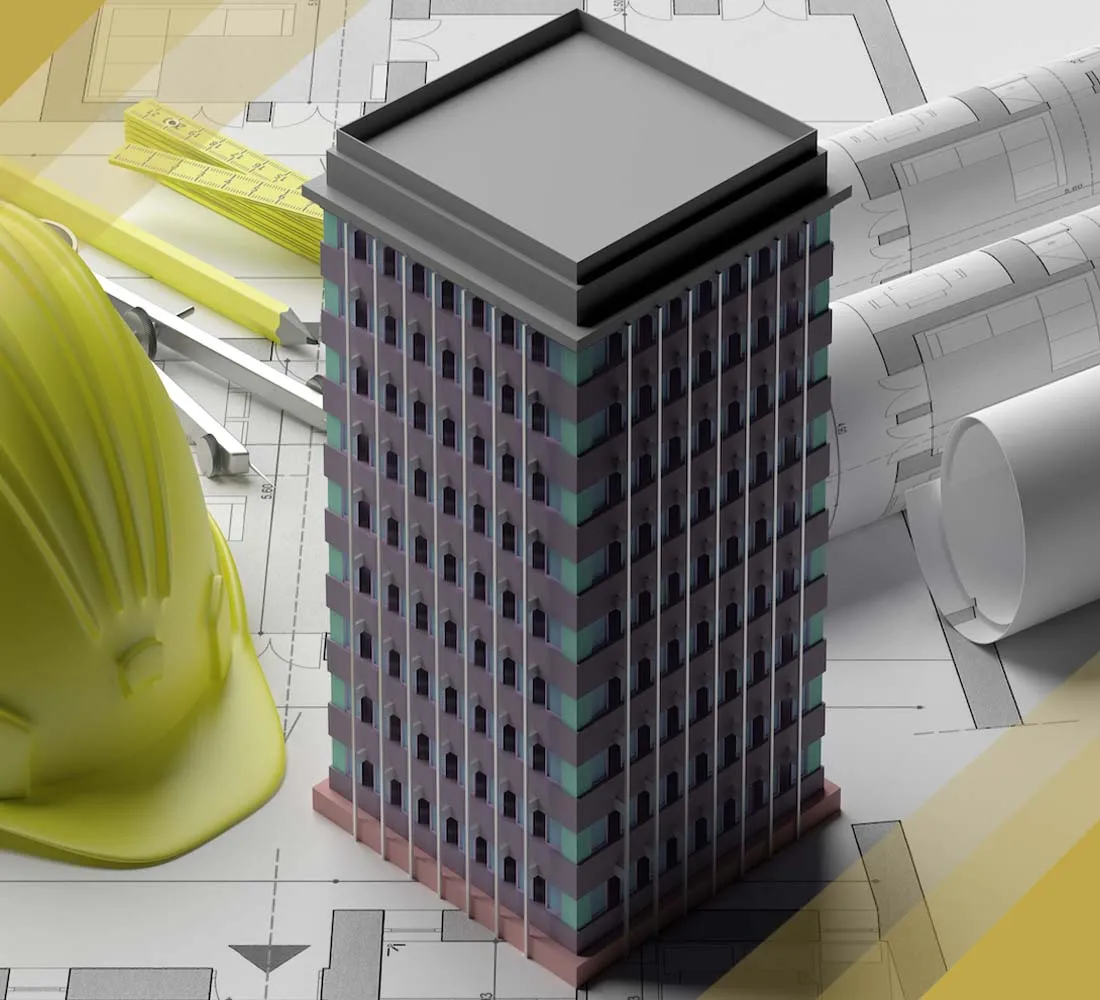After the earthquake that struck both southeastern Turkey and northeastern Syria a few weeks ago, people's minds revolved around a lot of questions, among these questions are: What are earthquake-resistant buildings? How is it designed? What is the extent of the guarantee of protection provided by these buildings in the event of an earthquake, God forbid?
Questions that do not revolve in the minds of those who live in Turkey and Syria, considering that the earthquake occurred there only a few days ago, but it has become an obsession with fear in the minds of many around the world. The sight of some dilapidated buildings, the size of the loss of life and material losses, and the repercussions after the earthquake make anyone wonder what is the difference between living In a house that is protected and designed against earthquakes and does not collapse when an earthquake occurs, or a house that may collapse in an instant when it occurs.. After the Izmit earthquake occurred in 1999, the Turkish government forced construction companies that designed and implemented projects to design and implement all projects and buildings to resist natural disasters, including earthquakes..and in In the areas of Istanbul, there are many projects that are currently being built, and even previously, after the Izmit earthquake, they were designed and implemented on this basis.. Here we will give some information on how buildings are designed to be resistant to earthquakes and natural disasters, and the extent of protection that buildings provide to their residents in the event of an earthquake.
All countries are prone to earthquakes at any time, especially the countries that are located on the earthquake belt. These countries are prone to earthquakes with degrees of strength that lead to the collapse of giant buildings. These buildings are being demolished because they were built in a normal way without any calculations or reinforcements, because no one thought that an earthquake would strike them, as happened in Egypt, which was affected by the aftershock of the last earthquake. Because his strength was simple because it was affected by an extension of the tremor, not an earthquake. If his strength was severe, the buildings would have fallen like what happened in the rest of the country, so the infrastructure is very important in preserving the buildings from any seismic surprises that could claim the lives of many people.
What is an earthquake?
An earthquake or earthquake is a natural phenomenon, and it is a vibration or a series of successive tremors of the earth’s surface that occur in a time not exceeding a few seconds, which results from the movement of the rock plates in the earth’s crust. This leads to the breaking of rocks and their displacement due to the accumulation of internal stresses of the earth as a result of geological influences that result in the movement of the earth's plates, which in turn produces seismic activities at the level of the boundaries of the rock plates. And the earthquake arises as a result of volcanic activities or as a result of the presence of slips in the layers of the earth’s crust. Earthquakes lead to cracking of the earth, depletion of springs, the emergence of new springs, or the occurrence of rises and depressions in the earth’s crust, as well as the occurrence of high waves under the sea (tsunami), in addition to its devastating effects on buildings, transportation, and facilities .
What is the cause of the earthquake that occurred weeks ago in Turkey and Syria?
The earth's crust consists of separate parts called plates, which gather side by side, and these plates move repeatedly, but their friction with adjacent plates prevents them from doing so, but sometimes pressure builds up until one of the plates suddenly overturns, causing the surface to move, and in the case of the current earthquakes that occurred weeks ago The Arabian plate was moving north and grinding into its friction the Anatolian plate, and plate friction was responsible for these very devastating earthquakes in southeastern Turkey and northwest Syria.
What is meant by earthquake resistant buildings?
They are buildings designed to protect lives and property in the event of earthquakes and earthquakes, and the Turkish government has obligated all construction companies to build projects that include earthquake-resistant systems, especially after the devastating earthquake that hit the northern Marmara region, and among the laws that the Turkish government obligates everyone who owns real estate in Turkey Whatever its type, it is insured against earthquakes and natural disasters. It is an annual insurance called “DASK” in Turkey.
It is very important to pay attention to the infrastructure of buildings in general, not just residential places, by conducting a ground survey to find out the places most vulnerable to earthquakes, to add a lot of reinforcements to them, or to design them in a way that preserves them from collapse with a slight force of earthquakes.
For this, there are many things or characteristics that are taken into consideration during the design of earthquake-resistant buildings, including:
Highly flexible building design:
During the design of earthquake-resistant buildings, the first thing that is put into the calculations is to give them the characteristic of flexibility, meaning that they are designed as a flexible structure. Flexibility is what protects homes from demolition due to earthquakes. From the base or foundations of the building to the top, and the tools used for flexibility in the base differ from the tools used in the middle, and these tools are called flexible cushions.
shock bearing:
Earthquake-resistant buildings must be designed to fully withstand shocks, as the building must be designed to absorb the largest amount of seismic energy, because by that absorption it will reduce energy and resist collapse, and this is done using a technique called seismic isolation or seismic insulator by designing buildings Or concrete structures, by placing shock absorbers, where rubber is used in them with a certain thickness, according to the design calculations.
Use of high ductility materials:
It is one of the internal reinforcements of buildings, so it is necessary to use materials with high ductility because these materials absorb large amounts of earthquake energy without breaking, and these are not available in low ductility concrete materials, so materials such as steel that is characterized by high ductility are used for coatings, along with a lot of High fiber material.
base isolation:
One of the main reinforcements used to protect buildings from earthquakes is to isolate the base, and it is done through the reinforced diaphragm, which is one of the basic horizontal components of these buildings and is used for floors, where earthquake-resistant buildings contain membranes on their surface and are strengthened horizontally to share the main components, so the reinforcement It should be on all sides so that buildings are not easily destroyed.
Use of strong concrete in joints:
The joints or the sides are the ones that carry the buildings, so in order for the building to be well supported, it is necessary to use the best materials for the joints, such as concrete with fibers, which are considered highly ductile materials as they absorb many shocks and various earthquakes.
Turkey and basic standards that must be adhered to when constructing earthquake-resistant buildings:
The engineering and construction sectors in Turkey are witnessing a development in the field of constructing earthquake-resistant buildings, especially after the devastating Izmit earthquake, as it has become essential to obtain all approvals for any engineering project. It must be within the basic criteria that are adhered to, including:
- Designing buildings in a way that provides support for the building by connecting the roofs and walls with a solid square that remains stable when earthquakes occur, and the vertical structure of the building works to help resist the lateral forces resulting from earthquakes.
- As for the towers and skyscrapers, they are built on separate bases consisting of springs, cylinders, and metal balls whose functions are to absorb shocks, so that the building is not subject to vibration caused by earthquakes.
- The use of strong building joints that help reduce risks and absorb pressure, which makes them able to absorb seismic forces, and would also make the building work as a single unit without disintegrating due to an earthquake.
- One of the most important other characteristics is the strength of the foundations of the building, which are characterized by earthquake-resistant buildings, as the appropriate soil is chosen to build the buildings on it and the dirt or sandy areas are moved away from it, and the construction of buildings on a solid ground reduces the vibration of the building in the event of earthquakes and also helps to connect The rules for building solid ground are to preserve it during earthquakes.
- The dimensions of the building are taken into account. In the event that the length of the building exceeds 50 meters, expansion and landing joints are placed on the upper floors, and seismic joints are placed, and their aim is to maintain the safety of the building in the event that the area is exposed to earthquakes.
What are the guarantees of construction companies in the event of earthquakes in Turkey?
After the Turkish government obligated the construction companies to build buildings compatible with the conditions for protection from earthquakes, the majority of modern buildings in Turkey became earthquake-resistant, and the construction companies pledged to adhere to the conditions required of them to the fullest, and clarified the period and the ability of the building to resist earthquakes and construction specifications, and most of the buildings intended for housing have It is capable of resisting earthquakes of up to 8 degrees on the Richter scale.
The earthquake-resistant buildings inside projects, modern residential complexes, and independent buildings of Turkish real estate, specifically Istanbul, is one of the advantages that encourage many to buy real estate in it. We, in turn, MBANY Real Estate Company, wish we have provided you with a comprehensive picture of the advantages of earthquake-resistant buildings.
You can contact us, MBANY Real Estate Company, to find out more about these residential projects and apartments for sale in Turkey that conform to these specifications.






